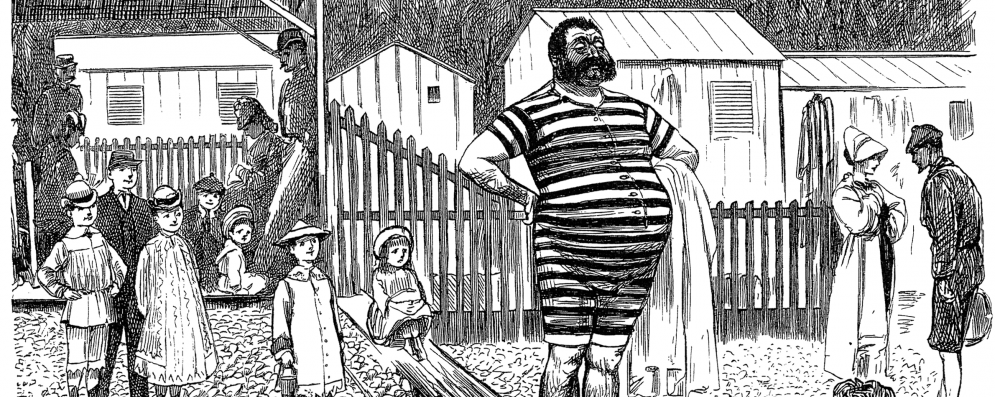Hydrotherapy Versus Conventional Land-Based Exercise for the Management of Patients With Osteoarthritis of the Knee: A critical appraisal
Posted on 6th December 2018 by Chi Fung Chan

This blog is a critical appraisal of the following randomized controlled trial: Hydrotherapy versus conventional land-based exercise for the management of patients with osteoarthritis of the knee
Background
Osteoarthritis (OA) is highly prevalent and it is the leading cause of disability worldwide (Vina and Kwoh 2017). Knee OA patients are likely to have complex and multifactorial joint degeneration which negatively affects their physical and mental well-being. Despite being highly used in physiotherapy, the clinical evidence of knee OA hydrotherapy is poor. Therefore, this clinical trial evaluated the effectiveness of knee OA hydrotherapy and compared the outcomes with conventional land-based exercise users.
What was the study?
64 participants with knee OA were selected with inclusive criteria from one local hospital in Brazil. Researchers allocated all the participants to either the water-based or land-based exercise group randomly. Then, exercises such as strengthening and stretching of lower extremity muscles and gait training were instructed by 2 physiotherapists, who crossover between groups every week. The duration of the study was 18 weeks.
The primary outcome was pain which was measured by the visual analog scale (VAS). The secondary outcome consisted of Lequesne Index for knee OA, Western Ontario and McMaster Universities Osteoarthritis Index (WOMAC), VAS for pain and time during the 50-foot walk test (50FWT), and the amount of non-steroidal anti-inflammatory drugs taken. All outcomes were measured by an independent investigator at baseline, 9 weeks and 18 weeks from the start of the program.
Results
The two groups had similar pain reduction and improvements in WOMAC, Lequesne index and the 50FWT throughout. The water-based group had resulted in a greater reduction of pain than the land-based group before and after the 50FWT test at the end of the study.
The weaknesses and strengths of the study
First of all, the sample size of the study was significantly small, consisting of 64 participants from the same hospital in Brazil. Highlighted by an observational study, the burden of knee OA in Latin American countries is highly related to demographic, ethical, methodological, and health care accessibility factors (Burgos-Vargas et al. 2014). These factors can lead to various results over different patient cultures. Therefore, a larger sample size should be implemented to get a more clinically significant result.
Although the two groups were similar in terms of demographic background, the male to female ratio in both groups differed significantly (water-based group: 2 male, 30 female and land-based group: 3 male, 29 female). Researchers suggested that women are more sensitive to pain than men (Stanford medicine 2012), thus increasing the risk of bias in the outcome: VAS for pain. According to a study, women have a significantly larger amount of cartilage loss and a greater OA heritability than men (Price and Herndon 2009). This may lead to a gap between genders in the development of OA. Moreover, it is suggested that there were more men with knee OA onset than women among Brazilians (Burgos-Vargas et al. 2014). Therefore, since the gender ratio in this study is significantly unequal when compared to the total knee OA population in Brazil, it may threaten the external validity of the study.
Moreover, the lack of control group is an obvious weakness of this study. Regarding the gold standard of a clinical trial, a control group is fundamental to show the effects of an intervention when comparing the intervention group and the control group (DeMets 1985). Although researchers had highly considered the previous positive evidence of conventional land-based exercises, they were still unable to rule out that improvements from both groups could be contributed by factors other than the intervention (e.g. duration of physiotherapy, degree of patients’ motivation and attention).
Regarding the strengths of the study, the participants were randomly allocated to groups by block randomisation and all results were measured by a blinded investigator to enhance internal validity. In the exercise program, modifications of land-based exercise were made to be performed in an aquatic setting. Therefore, the same types of exercises were used among participants, thus reducing the risk of bias. Although it was impossible for the instructors to be blinded, they crossed over between groups every week throughout the protocol to minimise factors which may alter the result. For example, the instructors skill level, amount of intervention time from each instructor and the degree of motivation from participants could cause bias in this study.
In fact, the participation rate from the water-based group (96%) is greater than the land-based group (81%), which implies a higher adherence to the intervention. It is known that adherence of the patient is essential to enhance functional ability, well-being and quality of life (Belza et al. 2002). Therefore, patients in the water-based group may be relatively more willing to follow the protocol, which could be a significant factor that alters the outcome. Although there were 7 drop-outs throughout the study due to various reasons, all data were analysed according to the intention-to-treat principle, which gives an unbiased estimation of the treatment effect (Sedgwick 2013). This study was superior to previous studies regarding the duration of intervention, lower mean age of participants and functional outcome measures.
Conclusion
Hydrotherapy was superior to conventional land-based exercise in terms of pain relief before and after walking. It showed that hydrotherapy is effective and should be included in the therapeutic approaches recommended for knee OA patients. Future research should investigate the improvement of strength and long-term effects of hydrotherapy.



